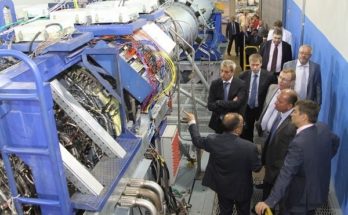by Carter Palmer, Power Systems Specialist, Forecast International.
For the first time, combined-cycle power plants (CCPPs) have surpassed coal-fired power plants in power generation in the U.S. Installed combined-cycle capacity now stands at 264 GW, whereas coal-fired production is at 243 GW. Although gas overtook coal in the 2000s, this is the first time a specific technology – combined-cycle – topped coal.
Gas turbines were developed in the 1930s and combined-cycle technology has been around since the 1950s. A combined-cycle plant utilizes the hot exhaust from gas turbines to heat water, produce steam and, in turn, power a steam turbine. The configuration can be one gas turbine and one steam turbine (1×1) or two gas turbines and one steam turbine (2×1). By utilizing heat that would otherwise be wasted, combined-cycle plants are more efficient than simple-cycle (i.e., a stand-alone gas turbine) layouts.
The news comes during a downturn in the overall gas turbine market. The downturn is due to a few factors, including strong renewable competition. Electricity produced by renewables is now competitive with that produced by traditional fossil fuel means. Nevertheless, gas turbines still have a place – they can produce power at any time, whereas solar and wind power are dependent on forces of nature. Another factor of this downturn is overcapacity: there are more turbines than needed. One example of this is a combined-cycle plant in Bavaria, Germany. Once the most efficient CCPP in the world, the Irsching Power Station has been idled now for a third year due to low profitability.
Despite the slump in the gas turbine market, energy demands continue to increase worldwide. The fact that combined-cycle applications have out-performed coal is indicative of environmental trends affecting the industry. Coal is not as environmentally friendly as other technologies. Gas turbines, on the other hand, are seemingly here to stay.
For 50 years, Forecast International intelligence reports have been the aerospace and defense industry standard for accurate research, analysis, and projections. Our experienced analysts compile, evaluate, and present accurate data for decision makers. FI's market research reports offer concise analysis of individual programs and identify market opportunities. Each report includes a program overview, detailed statistics, recent developments and a competitive analysis, culminating in production forecasts spanning 10 or 15 years. Let our market intelligence reports be a key part of reducing uncertainties and mastering your specific market and its growth potential. Find out more at www.forecastinternational.com



